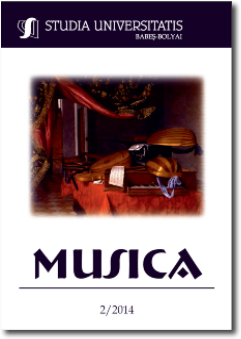DIE MUSIKALISCHE ANALYSE DES WERKES „MYSTERIUM“ VON KISKAMONI-SZALAY MIKLÓS
Keywords:
folk scales, 1:2 model, sequence, recurrence, alpha accord, modal characterAbstract
Kiskamoni-Szalay Miklós (1930-2003) was a Transylvanian composer and university lecturer. In 1986 he emigrated to Austria to escape from repression suffered by the Hungarian population in Romania. There he composed the song “Mystery” (1995), based on the poem of the same name by the Hungarian poet Ady Endre. This work is modal in character from every point of view. The classical tonal musical resolutions are absent from the work. This modal character is present on a number of levels: the modal scales and melodies characteristic of folk music, plus those to be found in 19th and 20th century music, especially in the compositions of Bartók. The analysis is based on a number of musical criteria: scales, musical systems (including folk scales, tonal scales, hexatonic and Bartók-style models), melody lines, themes, polyphony, harmony, form, symmetry and rhythm.
Downloads
Published
How to Cite
Issue
Section
License
Copyright (c) 2014 Studia Universitatis Babeș-Bolyai Musica

This work is licensed under a Creative Commons Attribution-NonCommercial-NoDerivatives 4.0 International License.



